
The Birdcage Awl
Birdcage awls are used to start holes for drilling and for screws …

I see what appear to be scratch awls used as a birdcage awl – and I am puzzled by this since the scratch awl is intended for scribing a line, and are not designed to create a hole. Indeed, a scratch awl used for the creation of a hole can force the grain fibres apart and split a board.
Furthermore, the traditional scratch awl is, I believe, also clumsy to use in scribing a line.
Here are a couple of scratch awls typical of the type to which I refer – one by Bridge City Toolworks … and another by Garret Wade …


Scratch
awls are easier to use when held and used like a pencil, hence this
design (one of mine, now made by Chris
Vesper).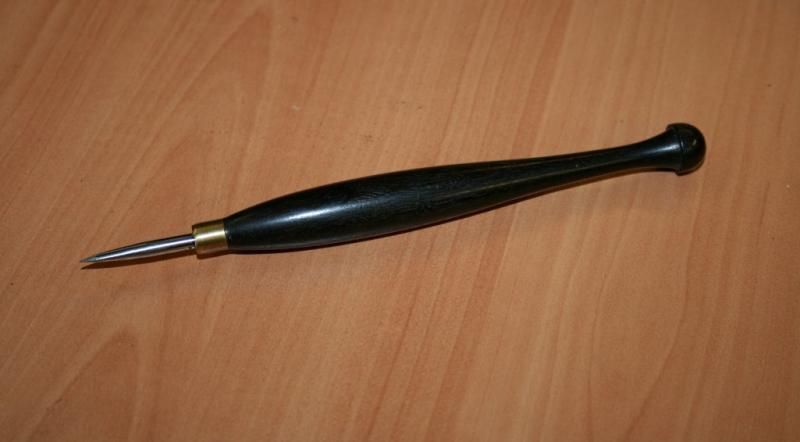
Recently
I ordered a birdcage kit from Czech Edge, a 1/4" blade in
carbide. I planned on building a design I have been pondering over
for some time. Well, I doubt that it is revolutionary, but it just
seemed the right way to design an awl for use in making holes.
As
it happens, I built two, in different sizes.
Why
carbide? Well, I made the birdcage awl below about 10 years ago, and
it is way overdue for replacement.

The
blade is a steel rod - I do not know what steel it is (probably an O1
type) - and it is both difficult to grind into four facets and it
does not hold an edge particularly well. It let me down for the last
time.
The
Czech Edge carbide blade is beautifully made. 1/4" square rod
and ground ready to use. Comes with a bronze ferrule ...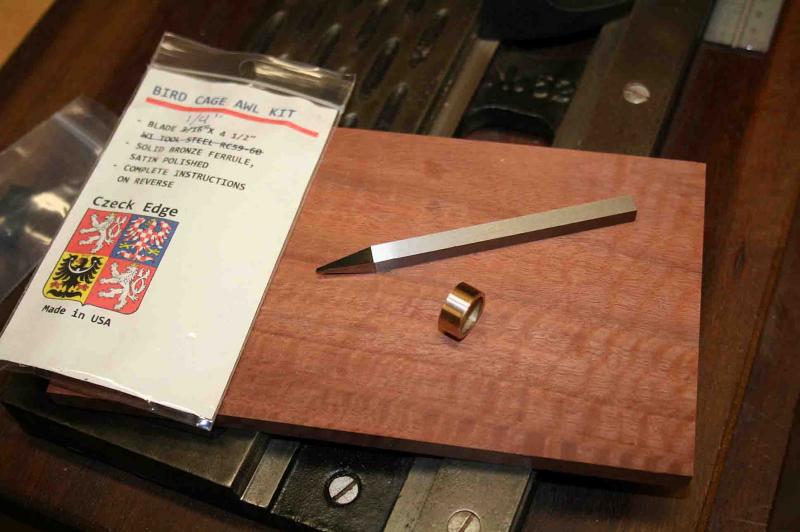
I
thought that the end was blunt until I looked closely. It is actually
ground to a high angle point, probably as carbide is brittle and a
pointy end is vulnerable.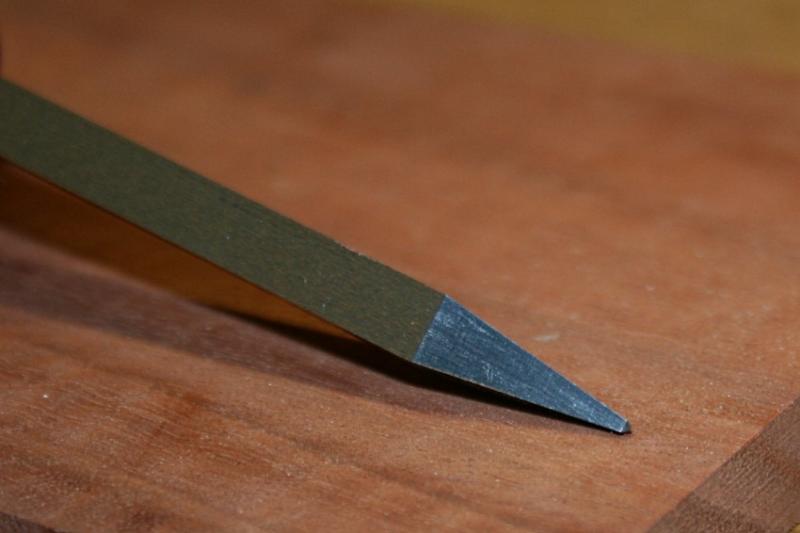
What
is the ideal design for a birdcage awl? Well, Form should follow
Function. Birdcage awls are used by pushing down and twisting. The
sharp ends act like reamer to cut away the waste (in other words, the
pointy end cannot be a round point. It needs cutting edges – hence
the ream-like shape). Downforce is required – something like the
pad on a brace (which is what got me thinking ...).
Our
local hardwoods demand a higher level of effort to bore below the
surface. To do this it would be necessary to use something that would
convert effort better into force. The old awl was inefficient since
it placed the effort on grasping for twist and not for downforce
...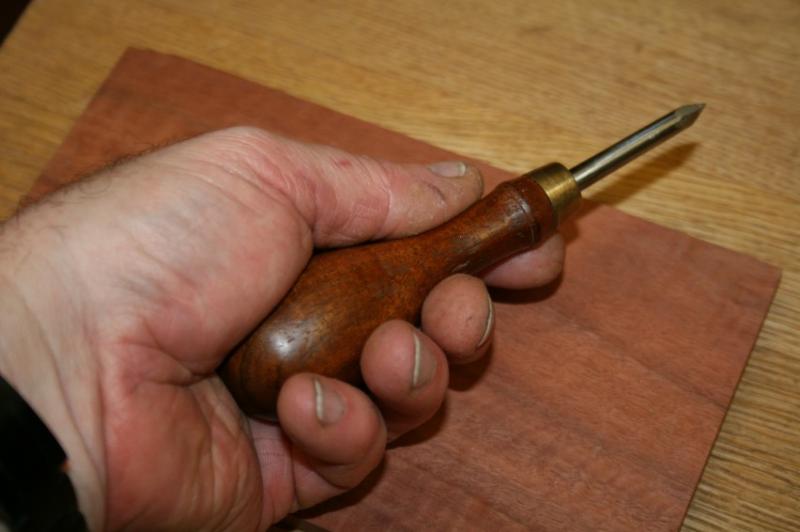
The
shape I had in mind was something along the lines of the pad from a
brace. This is what I came up with ...
This
blade was made from a 1/4" HSS square rod and ground to the same
angle as the Czech Edege blade.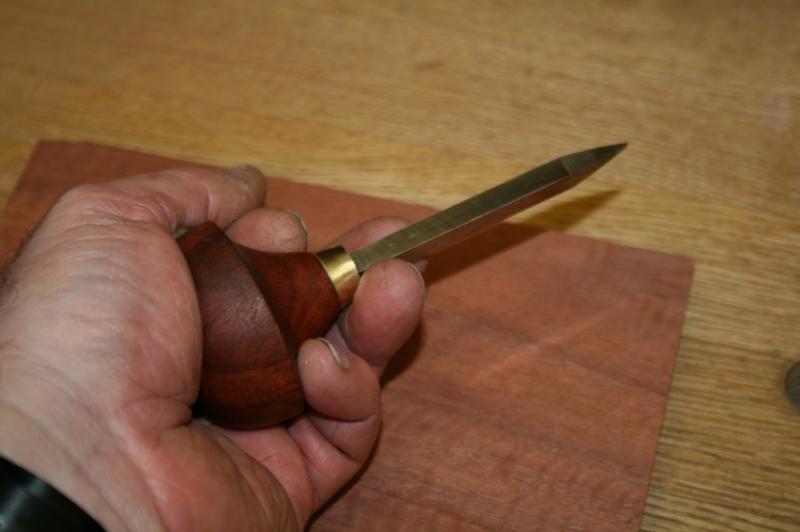
It
was a big improvement, but I decided to make another larger version,
one that could be held more tightly. My reasoning was that this would
create a combination of more downforce and easier twist.
I
used the Czech Edge blade for this …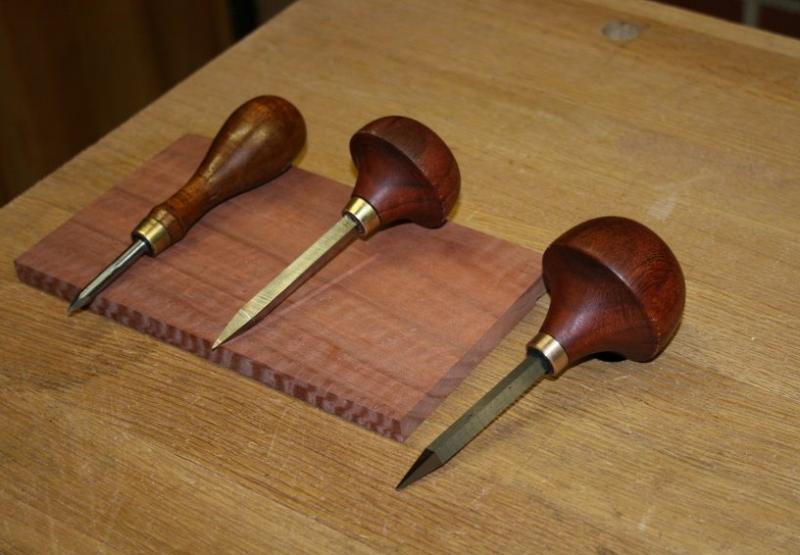
This
was sweet in the hand ..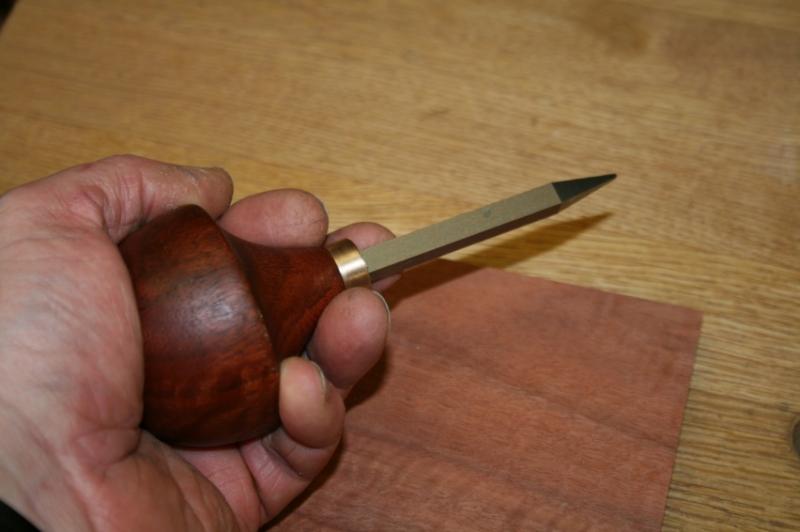
A
comparison of sizes ...
I used the two new birdcage awls interchangeably over the past few months. Gradually I found that I preferred the smaller of the two versions.
It dawned on me that this was “proof” that the essence of the birdcage design lies with the downforce, rather than the lateral twist. Both are necessary, however there is sufficient twist incorporated into the downforce grip, whereas there is little downforce incorporated into the lateral grip.
The final design ended with a birdcage awl downsized to the circumference Mk1, but with a little extra height (halfway to MkII).

Regards from Perth
Derek
September 2014